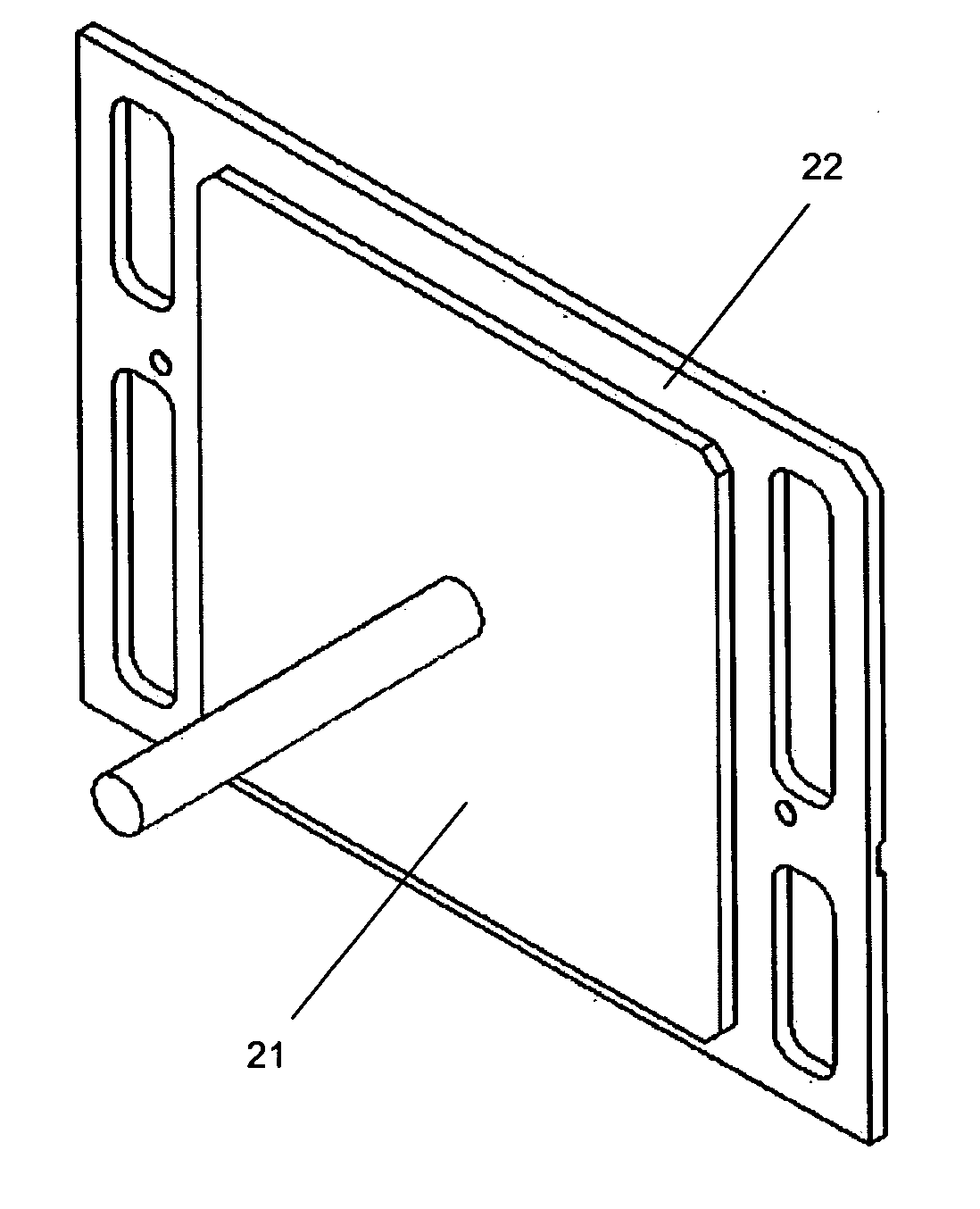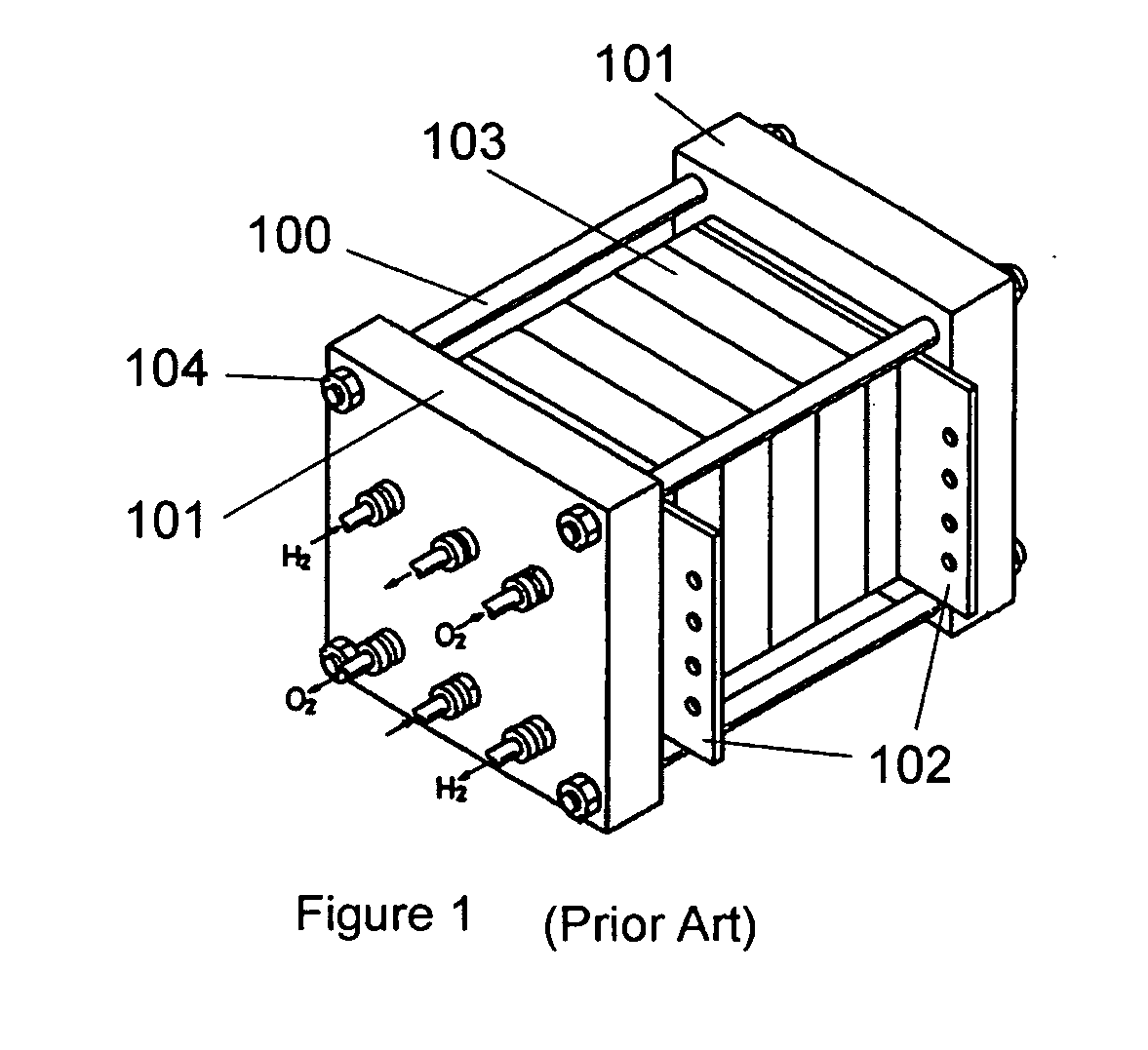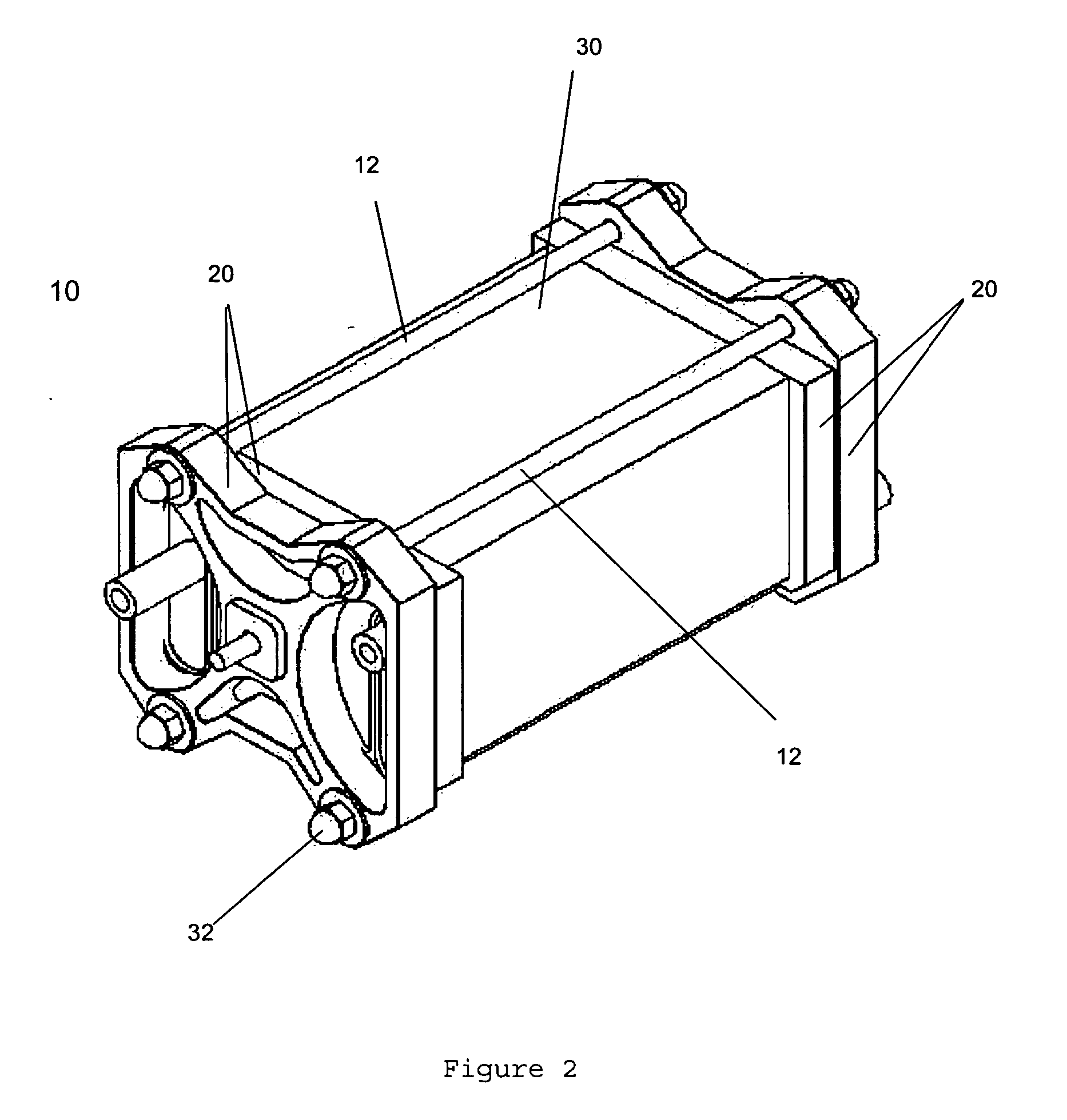PEM fuel cell stack with floating current collector plates
a fuel cell and collector plate technology, applied in the field of electrochemical fuel cell stacks, can solve the problems of inconvenient and intruding wire connectors, inconvenient and inconvenient design of edge current collectors, and inconvenient and inconvenient electrical contact between the two designs, so as to minimize the electrical contact resistance therebetween
- Summary
- Abstract
- Description
- Claims
- Application Information
AI Technical Summary
Benefits of technology
Problems solved by technology
Method used
Image
Examples
Embodiment Construction
[0023] Referring to FIG. 2 and according to one embodiment of the invention, a fuel cell stack assembly 10 comprises a pair of fuel cell end plate assemblies 20 sandwiching multiple fuel cells 30 (shown as a single block in FIG. 2). Tie rods 12 are fastened at each end to an end plate assembly 20 by spring-loaded tie rod nuts 32, thereby physically connecting the end plate assemblies 20 together; a selected pressure can be applied to the fuel cells 30 by selective adjustment of the tie rod nuts 32.
[0024] Referring to FIG. 3, each end plate assembly 20 comprises a current collector 21; an elastic pad 23; a current and gas insulator 24; an end plate 25; a current collector retention nut 26, and seals 27. The components 21, 23, 24, 25, 26, and 27 of the end plate assembly 20 cooperate in such a way that minimizes the electrical contact resistance between an end (first or last) fluid flow field plate 22 of the fuel cell stack 10 and the current collector 21. This is accomplished by arr...
PUM
 Login to View More
Login to View More Abstract
Description
Claims
Application Information
 Login to View More
Login to View More - R&D
- Intellectual Property
- Life Sciences
- Materials
- Tech Scout
- Unparalleled Data Quality
- Higher Quality Content
- 60% Fewer Hallucinations
Browse by: Latest US Patents, China's latest patents, Technical Efficacy Thesaurus, Application Domain, Technology Topic, Popular Technical Reports.
© 2025 PatSnap. All rights reserved.Legal|Privacy policy|Modern Slavery Act Transparency Statement|Sitemap|About US| Contact US: help@patsnap.com



